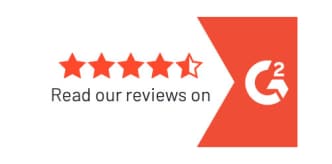In a perfect world, everyone would have enough money to cover all their expenses and they wouldn’t have to worry about retirement. Unfortunately, if that was even possible, it would be a long time coming. In the meantime, many Americans attempt to invest in their retirements via a 401(k) plan or an IRA — individual retirement account. Here at 401GO, we facilitate participation in 401(k) plans and IRAs — including Roth IRAs — for small businesses. Recently, the IRS made some important changes to how Roth IRAs can be funded that we want you to know about.
Why Roth IRAs?
Some people wonder why, if an employee has access to a traditional 401(k) plan, they would opt to open a Roth IRA as well. The main advantage for investors is that contributions to a Roth IRA are taxed as they are made, meaning that once the investor reaches retirement age and starts drawing on these benefits, they are tax-free. This is attractive to investors for a number of reasons. One is that if you start making contributions to a Roth IRA when you are just entering the workforce in your 20s and are likely in a lower tax bracket, you will save money later when you retire in a higher tax bracket.
Originally, when Roth IRAs became available in 1997, there were a lot more rules and a lot fewer options. Later, in 2006, the government made Roth 401(k)s available, and now many employers offer traditional and Roth 401(k)s.
The New IRS Regulation: Secure 2.0
Until now, employees and employers alike have been familiar with the drill — traditional 401(k) contributions are deducted before payroll taxes are taken out and Roth contributions are done after. Now, with Secure 2.0, the employer can contribute to the employee’s Roth account, after taxes, if the employee so chooses this option. This new feature can add up to significant savings as well as earnings for the employee, depending upon the size of the employer match and the number of years the employee can take advantage of this new law.
One important caveat is that employees must be fully vested in the plan in order to benefit from taxed employer contributions. Whether you’re a startup or a long-standing company that is just now beginning to offer a 401(k) plan or IRA to your employees, your vesting schedule matters — to your employees and to you. Common vesting schedules are between two and five years. When you’re thinking about offering the Secure 2.0 Roth option, you’ll want to consider your typical employee’s longevity with the company and the vesting schedule you’ve chosen. This will help you determine if it makes sense to offer Roth matching. If, over the years, the majority of your employees leave for other opportunities before they are fully invested, this option might not be for you.
If you decide that Roth matching contributions would be valuable to offer your employees, you must set up a system by which the taxes owed on these contributions come out of the employee’s paycheck. Falling behind on paying these taxes or allowing any lapse or lag can result in fines and penalties levied by the IRS.
The changes included in Secure 2.0 also apply to both SIMPLE and SEP IRAs. Previously, employees and employers could only contribute pre-tax dollars to these accounts.
If you determine that your employees could benefit from the Roth provisions of Secure 2.0, you must take action to amend your plan before attempting to implement the changes to the program. Your financial advisor should be able to help you with the details of the transaction.
Why Secure 2.0?
You may wonder why the IRS has gone to the trouble of creating this new regulation. According to a CBS News report in March of 2023, the IRS currently has a backlog of 10 million tax returns. Getting a live employee at the IRS on the phone is an almost unheard-of achievement these days. Yet they have time to create new regulations to benefit Americans.
They do, but keep in mind — this regulation will benefit the government too. When employee investors choose to receive employer contributions to their Roth accounts, the government immediately begins collecting taxes from them, thereby sweetening the pot sooner rather than later.
It’s important to remember this when it comes time to implement this new benefit at your workplace. That’s when you may notice some ambiguities regarding this new regulation. For instance, does an employee have to be 100% vested at the time the employer contributions begin, or can they start earlier in the same calendar year? Can the employee transfer employer contributions from a traditional 401(k) to a Roth account after becoming fully vested?
Even without these ambiguities, the new rules will create more paperwork for small business owners. However, it may be well worth it. After all, offering a 401(k) plan is extra work too — like anything that is worth having. And being able to offer your employees more options to save more to invest in their retirement can only make you more attractive as an employer.
Stay up to date on important changes like this by bookmarking 401GO’s blog page — it’s your source for useful, practical — and lucrative — information about retirement investing for small business owners.



